| View previous topic :: View next topic |
| Author |
Message |
tb_a


Joined: 26 Jan 2010
Posts: 3678
Location: Austria
Expire: 2019-08-28
|
 Posted: Thu Jul 28, 2022 8:50 am Post subject: Posted: Thu Jul 28, 2022 8:50 am Post subject: |
 |
|
tb_a wrote:
| alex ph wrote: |
Thank you for the full-res shot! That is what I'd like to see.
The spontaneous distribution of light spots and shadow dots in your shot is chaotically pleasing. Your jpg approximation algorithm leaves them quite irregular. I'd wish it was the same in mine. |
You're welcome.
Well, the OnePlus 9 Pro is presently one of the best smartphones for photography (at least according to the various test sites and magazines); price/quality wise the most reasonable, for sure.
Obviously, the consulting from Hasselblad was more than just a marketing gag.
_________________
Thomas Bernardy
Manual focus lenses mainly from Minolta, Pentax, Voigtlaender, Leitz, Topcon and from Russia (too many to be listed here). |
|
| Back to top |
|
 |
tb_a


Joined: 26 Jan 2010
Posts: 3678
Location: Austria
Expire: 2019-08-28
|
 Posted: Thu Jul 28, 2022 9:17 am Post subject: Posted: Thu Jul 28, 2022 9:17 am Post subject: |
 |
|
tb_a wrote:
| alex ph wrote: |
| By the way, Dolomites is a tremendous zone of visual and bodily comfort. I imagine you've got a deep sensual reset during your bike trip. |
Well, the Dolomites are the heaven on earth for bikers. 
I've already booked my accommodation there for my next year's excursion in Steinegg next Bozen.
I think this will be my standard program every summer till the end of my life....
_________________
Thomas Bernardy
Manual focus lenses mainly from Minolta, Pentax, Voigtlaender, Leitz, Topcon and from Russia (too many to be listed here). |
|
| Back to top |
|
 |
alex ph

Joined: 16 Mar 2013
Posts: 1571
|
 Posted: Thu Jul 28, 2022 10:31 am Post subject: Posted: Thu Jul 28, 2022 10:31 am Post subject: |
 |
|
alex ph wrote:
That sounds like a great plan. Wish you a deep immersion into Alpine landscapes. |
|
| Back to top |
|
 |
tb_a


Joined: 26 Jan 2010
Posts: 3678
Location: Austria
Expire: 2019-08-28
|
 Posted: Thu Jul 28, 2022 10:33 am Post subject: Posted: Thu Jul 28, 2022 10:33 am Post subject: |
 |
|
tb_a wrote:
| alex ph wrote: |
| That sounds like a great plan. Wish you a deep immersion into Alpine landscapes. |

_________________
Thomas Bernardy
Manual focus lenses mainly from Minolta, Pentax, Voigtlaender, Leitz, Topcon and from Russia (too many to be listed here). |
|
| Back to top |
|
 |
alex ph

Joined: 16 Mar 2013
Posts: 1571
|
 Posted: Sun Jul 31, 2022 1:26 am Post subject: Posted: Sun Jul 31, 2022 1:26 am Post subject: |
 |
|
alex ph wrote:
New camera configs adjusted by GCam enthousiasts and tested in various kinds of difficult light. I find the results more satisfactory.
Even though natural forms, and especially foliage, are poorer defined (with pixel peeping) as compared to "real" digital photography, lights and shadows are now diffused in a more natural way than previously, without making too evident approximation squares and fictive clusters.
#1

#2
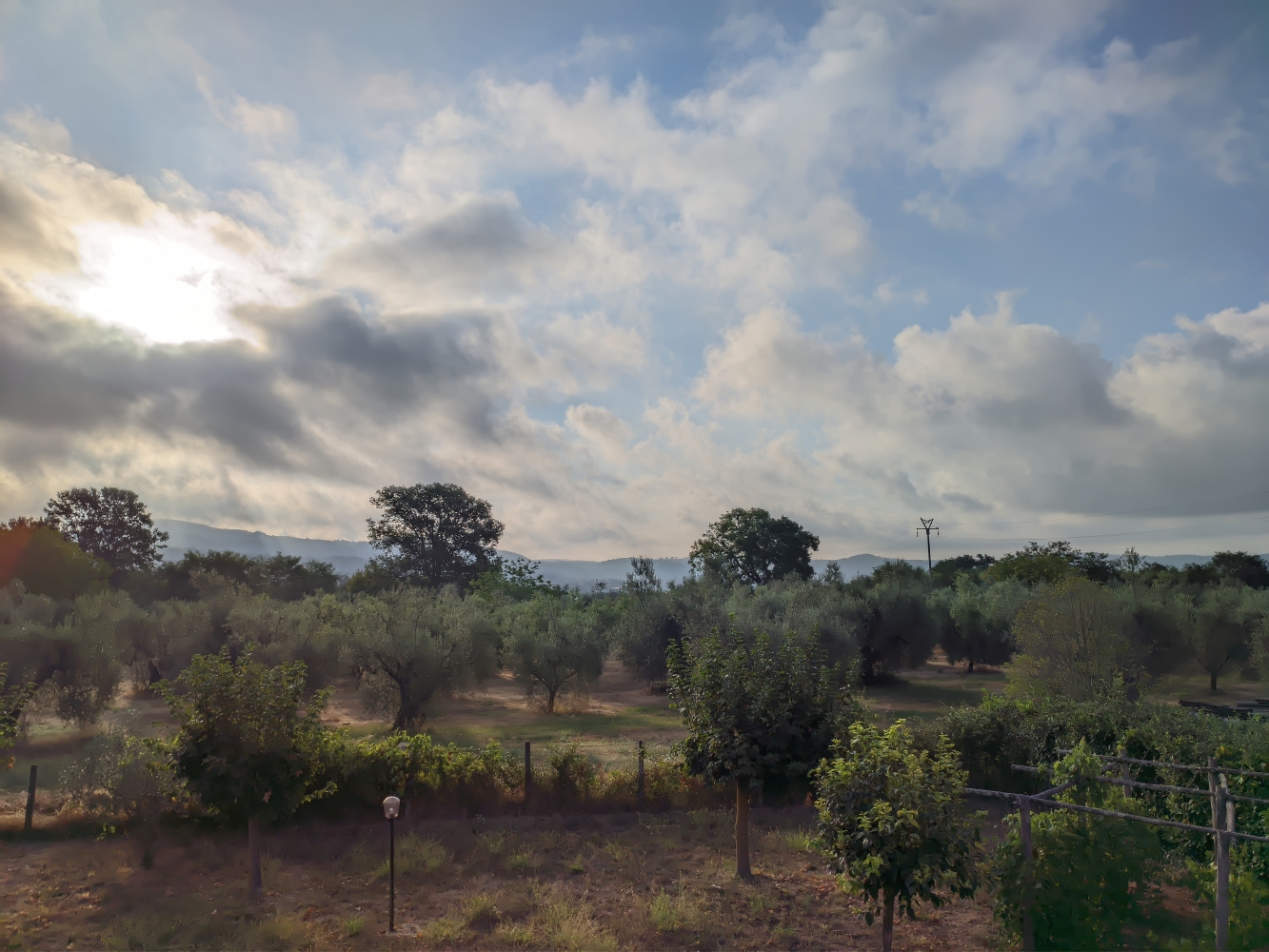
#3

The shots are SOOC jpg. I am still wondering if the resolving power of the sensor is not strong enough for complex scenery (even for geometrically shaped objects) or the algorithm might (should) be further improved.
Click the images to see them in full res. |
|
| Back to top |
|
 |
tb_a


Joined: 26 Jan 2010
Posts: 3678
Location: Austria
Expire: 2019-08-28
|
 Posted: Sun Jul 31, 2022 1:30 pm Post subject: Posted: Sun Jul 31, 2022 1:30 pm Post subject: |
 |
|
tb_a wrote:
Picture no. 2 looks similar to what I get when I use the full resolution 48MP mode and look at it at 100% view; i.e. not really usable compared to my 42MP pictures from my Sony A7R II.
However, when downsized to 12MP the picture is then perfectly clear.
_________________
Thomas Bernardy
Manual focus lenses mainly from Minolta, Pentax, Voigtlaender, Leitz, Topcon and from Russia (too many to be listed here). |
|
| Back to top |
|
 |
alex ph

Joined: 16 Mar 2013
Posts: 1571
|
 Posted: Sun Jul 31, 2022 10:03 pm Post subject: Posted: Sun Jul 31, 2022 10:03 pm Post subject: |
 |
|
alex ph wrote:
It's also true for for images downsized for web usage which often look crisper.

I am still disappointed. I expected more from the new generation of (budget) smartphones, given the advancement of computational photography. Visibly, we need to wait longer for an accessible dslr-like miracle. |
|
| Back to top |
|
 |
RokkorDoctor


Joined: 27 Nov 2021
Posts: 1269
Location: Kent, UK
|
 Posted: Mon Aug 01, 2022 8:34 am Post subject: Posted: Mon Aug 01, 2022 8:34 am Post subject: |
 |
|
RokkorDoctor wrote:
| alex ph wrote: |
| I am still disappointed. I expected more from the new generation of (budget) smartphones, given the advancement of computational photography. Visibly, we need to wait longer for an accessible dslr-like miracle. |
Well, put this expectation in perspective though; if it was easy to make a DSLR-quality camera as thin as a smartphone, it would have already happened quite a few years ago. Computational photography can only go so far as to replicating the physics of conventional full-frame optics. To get enough "information" to computationally replicate the DOF characteristics of full-frame optics using only very short FL smartphone optics, you need multiple perspective shots, which is one reason behind the trend of the proliferation of the number of lenses & sensors crammed into a single smartphone.
Smartphones are still a huge compromise, both for technical as well as historic reasons. I mean, taking a step back, historic compatibility reasons aside, is it anything other than bonkers that you can stream HD video on a smartphone, but a regular voice-call sounds abominable to the point of being unintelligible?
_________________
Mark
SONY A7S, A7RII + dust-sealed modded Novoflex/Fotodiox/Rayqual MD-NEX adapters
Minolta SR-1, SRT-101/303, XD7/XD11, XGM, X700
Bronica SQAi
Ricoh GX100
Minolta majority of all Rokkor SR/AR/MC/MD models made
Sigma 14mm/3.5 for SR mount
Tamron SP 60B 300mm/2.8 (Adaptall)
Samyang T-S 24mm/3.5 (Nikon mount, DIY converted to SR mount)
Schneider-Kreuznach PC-Super-Angulon 28mm/2.8 (SR mount)
Bronica PS 35/40/50/65/80/110/135/150/180/200/250mm |
|
| Back to top |
|
 |
tb_a


Joined: 26 Jan 2010
Posts: 3678
Location: Austria
Expire: 2019-08-28
|
 Posted: Mon Aug 01, 2022 8:56 am Post subject: Posted: Mon Aug 01, 2022 8:56 am Post subject: |
 |
|
tb_a wrote:
| alex ph wrote: |
I am still disappointed. I expected more from the new generation of (budget) smartphones, given the advancement of computational photography. |
Well, the most obvious difference between budget and high-end smartphones is the camera feature.
I doubt that this is only a software issue.
_________________
Thomas Bernardy
Manual focus lenses mainly from Minolta, Pentax, Voigtlaender, Leitz, Topcon and from Russia (too many to be listed here). |
|
| Back to top |
|
 |
alex ph

Joined: 16 Mar 2013
Posts: 1571
|
 Posted: Mon Aug 01, 2022 3:06 pm Post subject: Posted: Mon Aug 01, 2022 3:06 pm Post subject: |
 |
|
alex ph wrote:
If you look in the list of smartphones equipped with the same sensor/camera, you'll find models at 200 as well as at 800 euros.
It is a widely discussed strategy by Xiaomi to sell well equipped phones "in exchange" of a very dense tracking of users. Then, if you uninstall their proprietary OS and install a custom one, you may regain the good hardware without too many compromises with letting peek in your consumer habits.
I read that pixel binning (fusing 4 or 9 pixels into 1) gives a brighter and crisper image. That might be the case in theory. But to perform that, basic algorithms should work really well. I still hope that software rendering libraries could (would) be improved, and this sensor/camera would perform much better. Already the difference between non-adjustible stock camera and highly customizable GCam is sensible imagewise.
But maybe I am cherishing bad expectations, and this is the best performance the sensor is capable for. |
|
| Back to top |
|
 |
tb_a


Joined: 26 Jan 2010
Posts: 3678
Location: Austria
Expire: 2019-08-28
|
 Posted: Mon Aug 01, 2022 3:41 pm Post subject: Posted: Mon Aug 01, 2022 3:41 pm Post subject: |
 |
|
tb_a wrote:
OK, this may be true for many smartphones but not for the custom made Sony IMX789 from my OnePlus 9 Pro which seems to be limited to OnePlus (models 9 Pro and 10 Pro) and include picture processing algorithm developed by Hasselblad.
https://www.gsmarena.com/oneplus_9_series_launch_confirmed_for_march_23-news-48093.php
_________________
Thomas Bernardy
Manual focus lenses mainly from Minolta, Pentax, Voigtlaender, Leitz, Topcon and from Russia (too many to be listed here). |
|
| Back to top |
|
 |
alex ph

Joined: 16 Mar 2013
Posts: 1571
|
 Posted: Mon Aug 01, 2022 6:52 pm Post subject: Posted: Mon Aug 01, 2022 6:52 pm Post subject: |
 |
|
alex ph wrote:
That sounds special indeed! |
|
| Back to top |
|
 |
monkjason


Joined: 02 Dec 2013
Posts: 301
Location: Beijing, China
|
 Posted: Tue Aug 02, 2022 1:29 am Post subject: Posted: Tue Aug 02, 2022 1:29 am Post subject: |
 |
|
monkjason wrote:
Nowadays smartphones could help to produce good enough pictures than before, that's improvement they called, right? All that need to do is to click the virtual shutter button: A good picture should not definitely be produced by camera.
_________________
I like Hexanon and EBC.
Cameras: Pentax K01, Konica T3N chrome and black, Minolta XD11, Porst CR-7
Konica Lenses: UC Hexanon 35/2, UC Hexanon 28/1.8AE, UC Hexanon 15/2.8AE Fish-eye, UC Hexanon 80-200/4AE, UC Hexanon 45-100/3.5AE, UC Hexanon 400/5.6AE, FL-Hexanon 300/6.3AE, Hexanon 85/1.8AE, Hexanon 24/2.8 F22 Version, Hexanon 35/2AE, M-Hexanon 50/2, M-Hexanon 35/2
Minolta Lenses: MC Rokkor-X 35/1.8,MD Rokkor-X 50/1.2
Fujifilm Lenses: Porst UMC 50/1.2 |
|
| Back to top |
|
 |
visualopsins


Joined: 05 Mar 2009
Posts: 10543
Location: California
Expire: 2025-04-11
|
 Posted: Tue Aug 02, 2022 2:02 am Post subject: Posted: Tue Aug 02, 2022 2:02 am Post subject: |
 |
|
visualopsins wrote:
https://www.oneplus.com/10-pro
_________________
☮☮☮☮☮☮☮☮☮☮☮☮☮☮☮☮☮☮☮☮☮☮☮☮☮☮☮☮☮☮☮☮ like attracts like! ☮☮☮☮☮☮☮☮☮☮☮☮☮☮☮☮☮☮☮☮☮☮☮☮☮☮☮☮☮☮☮☮
Cameras: Sony ILCE-7RM2, Spotmatics II, F, and ESII, Nikon P4
Lenses:
M42 Asahi Optical Co., Takumar 1:4 f=35mm, 1:2 f=58mm (Sonnar), 1:2.4 f=58mm (Heliar), 1:2.2 f=55mm (Gaussian), 1:2.8 f=105mm (Model I), 1:2.8/105 (Model II), 1:5.6/200, Tele-Takumar 1:5.6/200, 1:6.3/300, Macro-Takumar 1:4/50, Auto-Takumar 1:2.3 f=35, 1:1.8 f=55mm, 1:2.2 f=55mm, Super-TAKUMAR 1:3.5/28 (fat), 1:2/35 (Fat), 1:1.4/50 (8-element), Super-Multi-Coated Fisheye-TAKUMAR 1:4/17, Super-Multi-Coated TAKUMAR 1:4.5/20, 1:3.5/24, 1:3.5/28, 1:2/35, 1:3.5/35, 1:1.8/85, 1:1.9/85 1:2.8/105, 1:3.5/135, 1:2.5/135 (II), 1:4/150, 1:4/200, 1:4/300, 1:4.5/500, Super-Multi-Coated Macro-TAKUMAR 1:4/50, 1:4/100, Super-Multi-Coated Bellows-TAKUMAR 1:4/100, SMC TAKUMAR 1:1.4/50, 1:1.8/55
M42 Carl Zeiss Jena Flektogon 2.4/35
Contax Carl Zeiss Vario-Sonnar T* 28-70mm F3.5-4.5
Pentax K-mount SMC PENTAX ZOOM 1:3.5 35~105mm, SMC PENTAX ZOOM 1:4 45~125mm
Nikon Micro-NIKKOR-P-C Auto 1:3.5 f=55mm, NIKKOR-P Auto 105mm f/2.5 Pre-AI (Sonnar), Micro-NIKKOR 105mm 1:4 AI, NIKKOR AI-S 35-135mm f/3,5-4,5
Tamron SP 17mm f/3.5 (51B), Tamron SP 17mm f/3.5 (51BB), SP 500mm f/8 (55BB), SP 70-210mm f/3.5 (19AH)
Vivitar 100mm 1:2.8 MC 1:1 Macro Telephoto (Kiron)
|
|
| Back to top |
|
 |
tb_a


Joined: 26 Jan 2010
Posts: 3678
Location: Austria
Expire: 2019-08-28
|
 Posted: Tue Aug 02, 2022 3:49 am Post subject: Posted: Tue Aug 02, 2022 3:49 am Post subject: |
 |
|
tb_a wrote:
| visualopsins wrote: |
| https://www.oneplus.com/10-pro |
Well, the new version 10 didn't really improve the camera functionality compared to the 9 Pro with the latest software update; in terms of hardware the cameras are identical.
Therefore, I decided to save the € 300,- which was the price difference when I bought the phone.
I think the 9 Pro was a good deal for € 650,-; the competition in this league is well above € 1.000,-.
_________________
Thomas Bernardy
Manual focus lenses mainly from Minolta, Pentax, Voigtlaender, Leitz, Topcon and from Russia (too many to be listed here). |
|
| Back to top |
|
 |
tb_a


Joined: 26 Jan 2010
Posts: 3678
Location: Austria
Expire: 2019-08-28
|
 Posted: Wed Aug 03, 2022 8:13 am Post subject: Posted: Wed Aug 03, 2022 8:13 am Post subject: |
 |
|
tb_a wrote:
So, this is the optimal method to get the best out of my OnePlus 9 Pro.
Picture shot in high resolution 48MP mode as JPG and downsized to 12MP on PC (factor 0.5x), better result than shooting in 12MP JPG or DNG mode with the smartphone.
For best quality viewing, please download and view in original size.
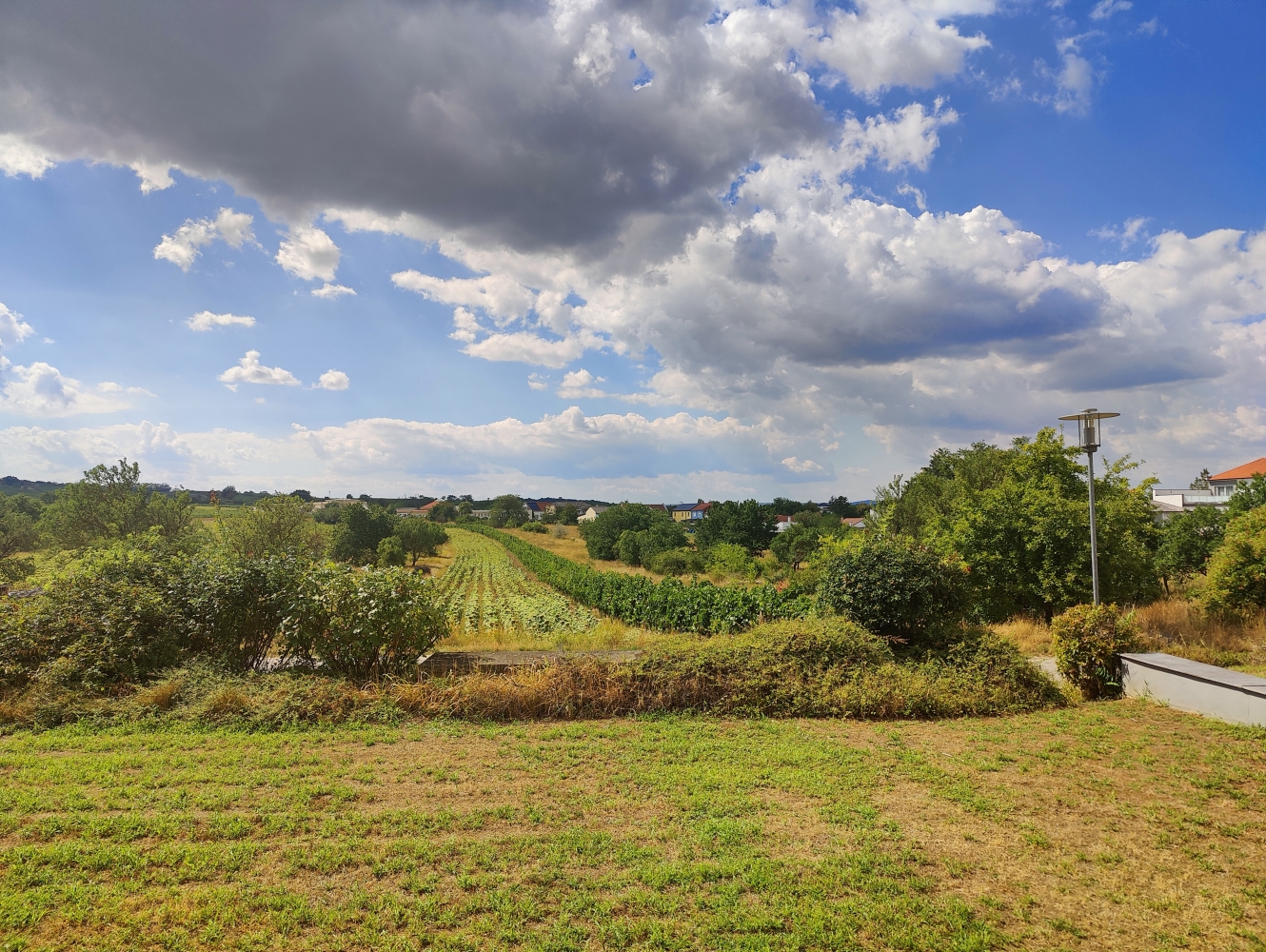
At least for me, that's more than good enough.
_________________
Thomas Bernardy
Manual focus lenses mainly from Minolta, Pentax, Voigtlaender, Leitz, Topcon and from Russia (too many to be listed here). |
|
| Back to top |
|
 |
alex ph

Joined: 16 Mar 2013
Posts: 1571
|
 Posted: Wed Aug 03, 2022 8:01 pm Post subject: Posted: Wed Aug 03, 2022 8:01 pm Post subject: |
 |
|
alex ph wrote:
In my phone, as in many other models, the higher resolution (48, 64 or 108Mp) is not achieved via a direct access to sensor cells, but via upscaling from the pixel-binned 12Mp image.
Your shot looks like having passed through a similar procedure, first upscaled then downscaled with sharpening. As a result, leaves and grass are charged of squarish approximations, something I observe in my stock camera shots. |
|
| Back to top |
|
 |
alex ph

Joined: 16 Mar 2013
Posts: 1571
|
 Posted: Tue Feb 28, 2023 3:22 am Post subject: Posted: Tue Feb 28, 2023 3:22 am Post subject: |
 |
|
alex ph wrote:
I decided to check my impression that today's mid-range smartphone computation photography got close to the late 2000s mid-range CCD cameras. I took the same infinity view with Redmi Note 10 pro and with Canon Powershot A720 IS at the short end of its zoom.
The shots are close in many respects when Redi shot is slightly cropped to the same width and then both are downsized. There are some nuances in colour rendition and in the way details are rendered.
#1 Canon Powershot A720 IS
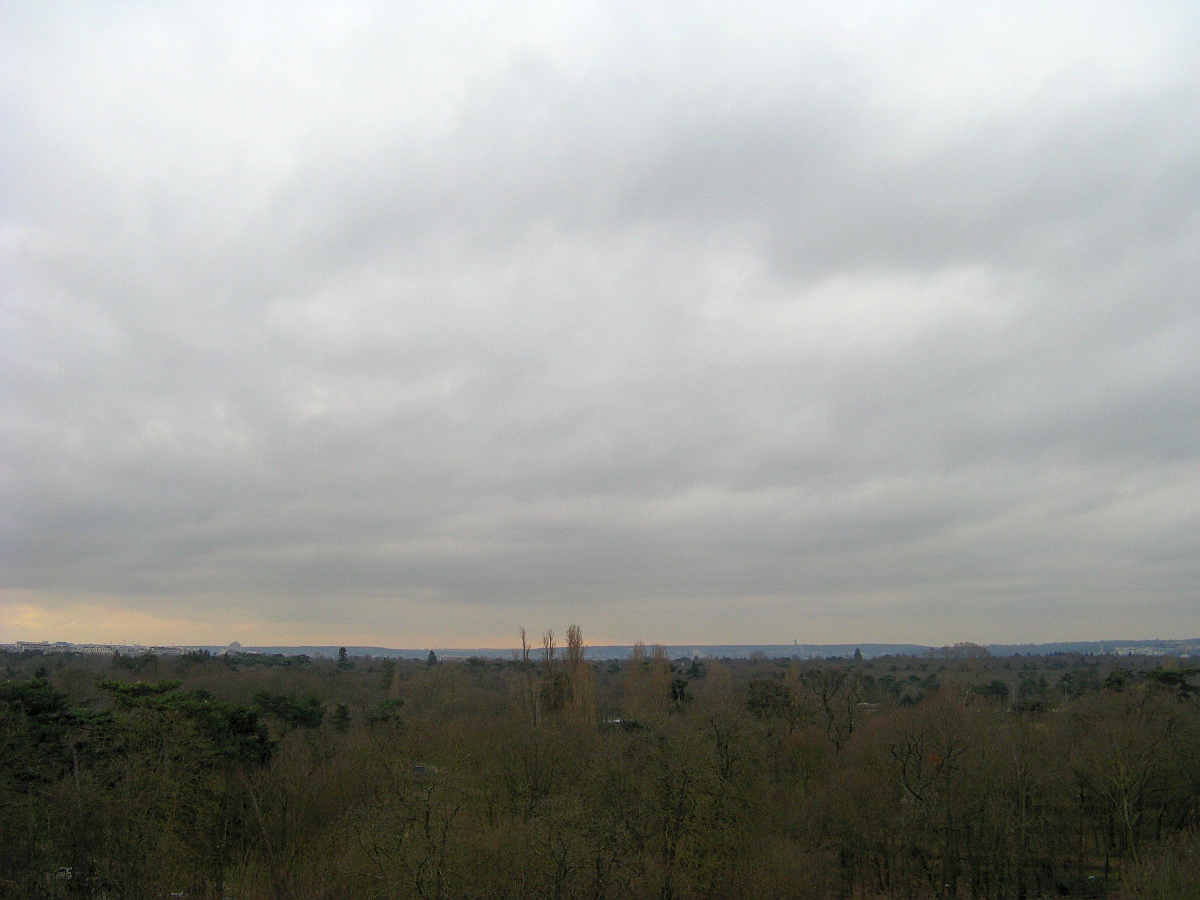
#2 Redmi Note 10 pro (with tweaked GCam), slightly cropped to fit the Canon proportion

In 100% SOOC crops the difference makes it more visible. Canon shot is noisier (giving a false idea of more foliage than there is in reality) and retaining more detail. Redmi shot is more contrasty and tidier (from the chromatic noise) but some fine details are definitely lost, making some trees look like purely impressionist blots.
Click at the images to appreciate the difference in detail.
#3 Canon 100% crop
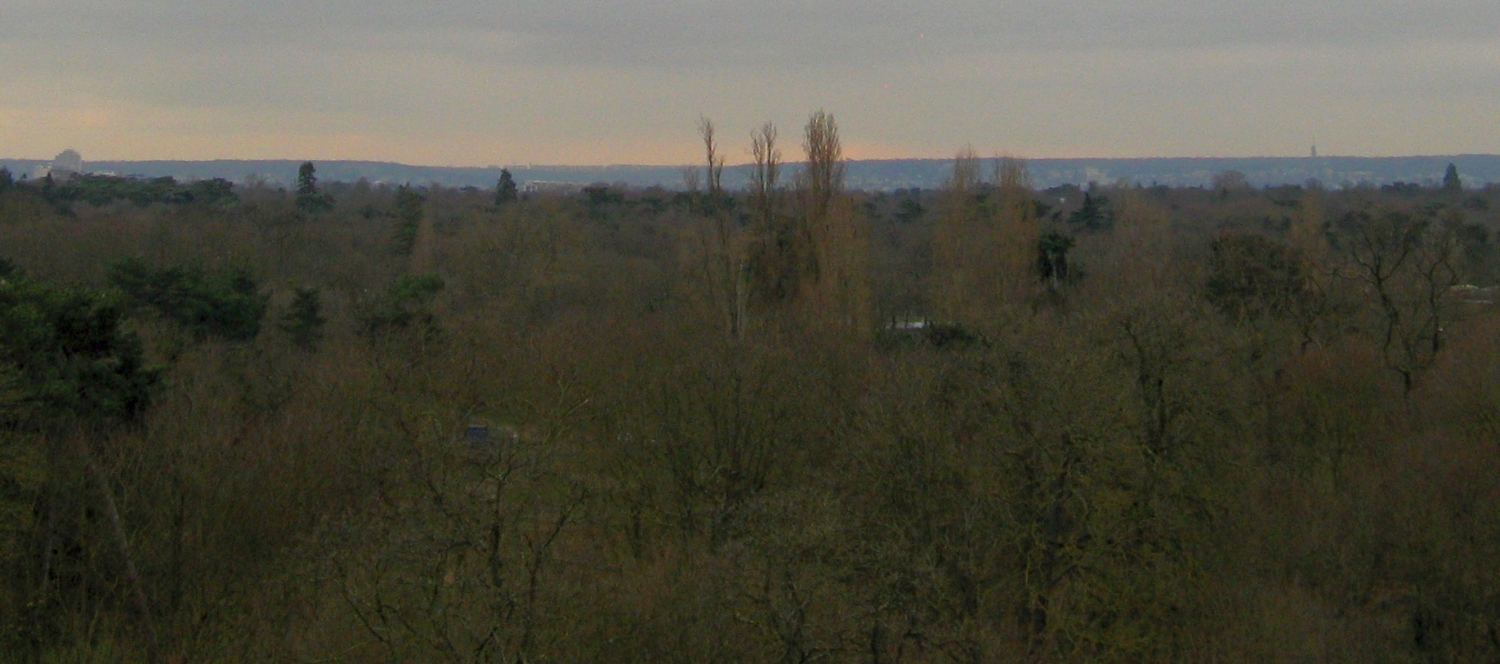
#4 Redmi 100% crop
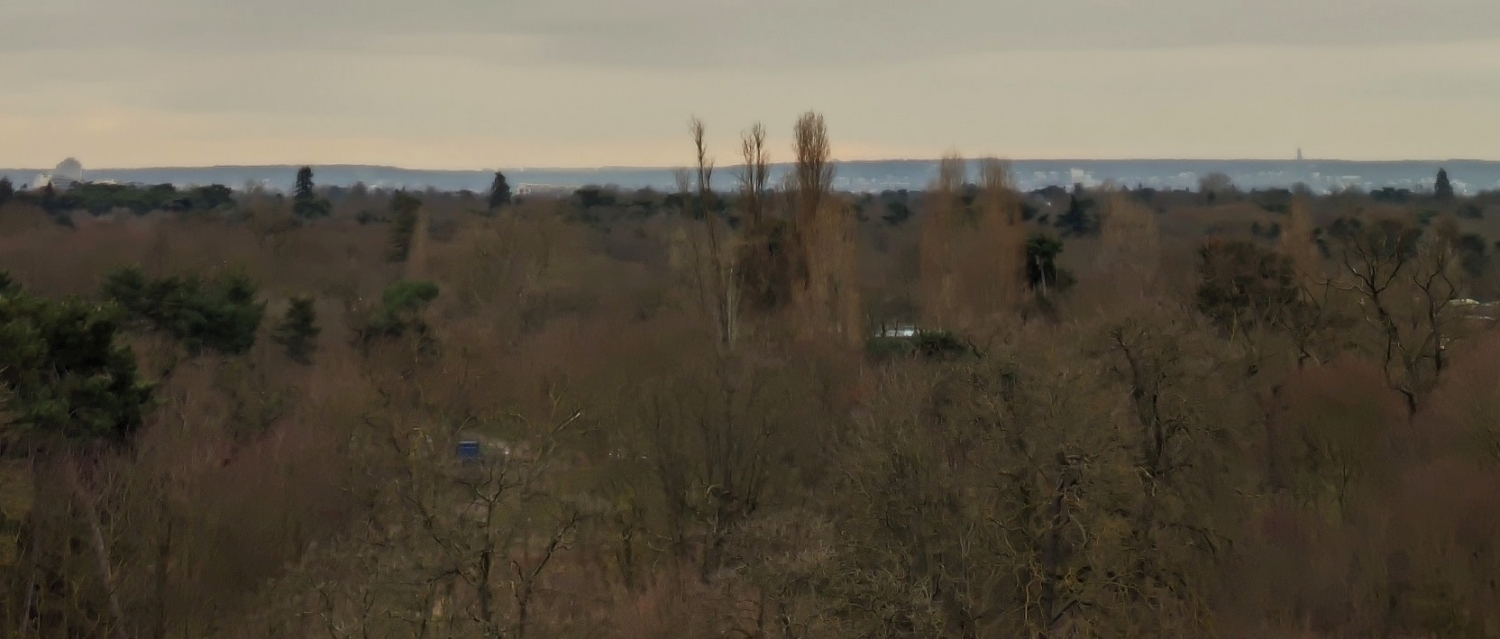
So when pixel peeping, the mid-2000 cameras still have a step in advance as for the level of detail. |
|
| Back to top |
|
 |
tb_a


Joined: 26 Jan 2010
Posts: 3678
Location: Austria
Expire: 2019-08-28
|
 Posted: Sat Jun 03, 2023 5:57 am Post subject: Posted: Sat Jun 03, 2023 5:57 am Post subject: |
 |
|
tb_a wrote:
Due to some troubles with my OnePlus 9 smartphone, I was looking for a good replacement; i.e. an Android smartphone with very good photography features with a bright screen and weather resistance (watertight).
I finally acquired the Google Pixel 7 Pro.
This smartphone provides an optical range of apprx. 14 to 120 mm focus length (in 35 mm equivalence) in an excellent quality; up to 240 mm (digital zoom) still very good, but higher magnifications not really recommended.
Actually, that is all what I need when on tour.
As a consequence, my cameras and lenses will stay at home, maybe forever...
Here are 2 examples from yesterday, both downsized to 2048px on the long side for presentation here. FL is 24mm in FS-equivalence. Clickable for best quality viewing.
Straight from the smartphone:
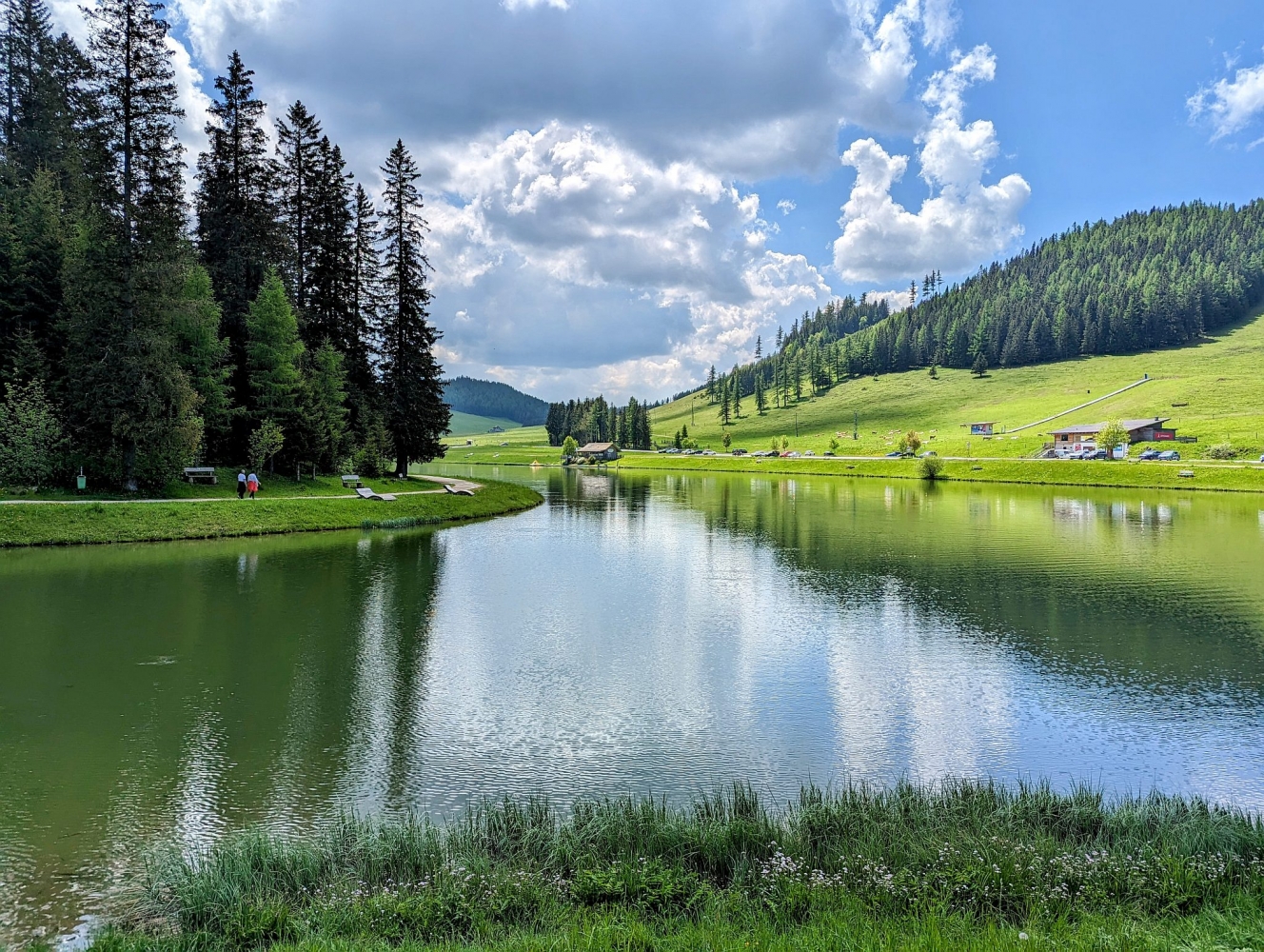
Same, but a little bit optimized (3:2 ratio, people removed and clarity added):
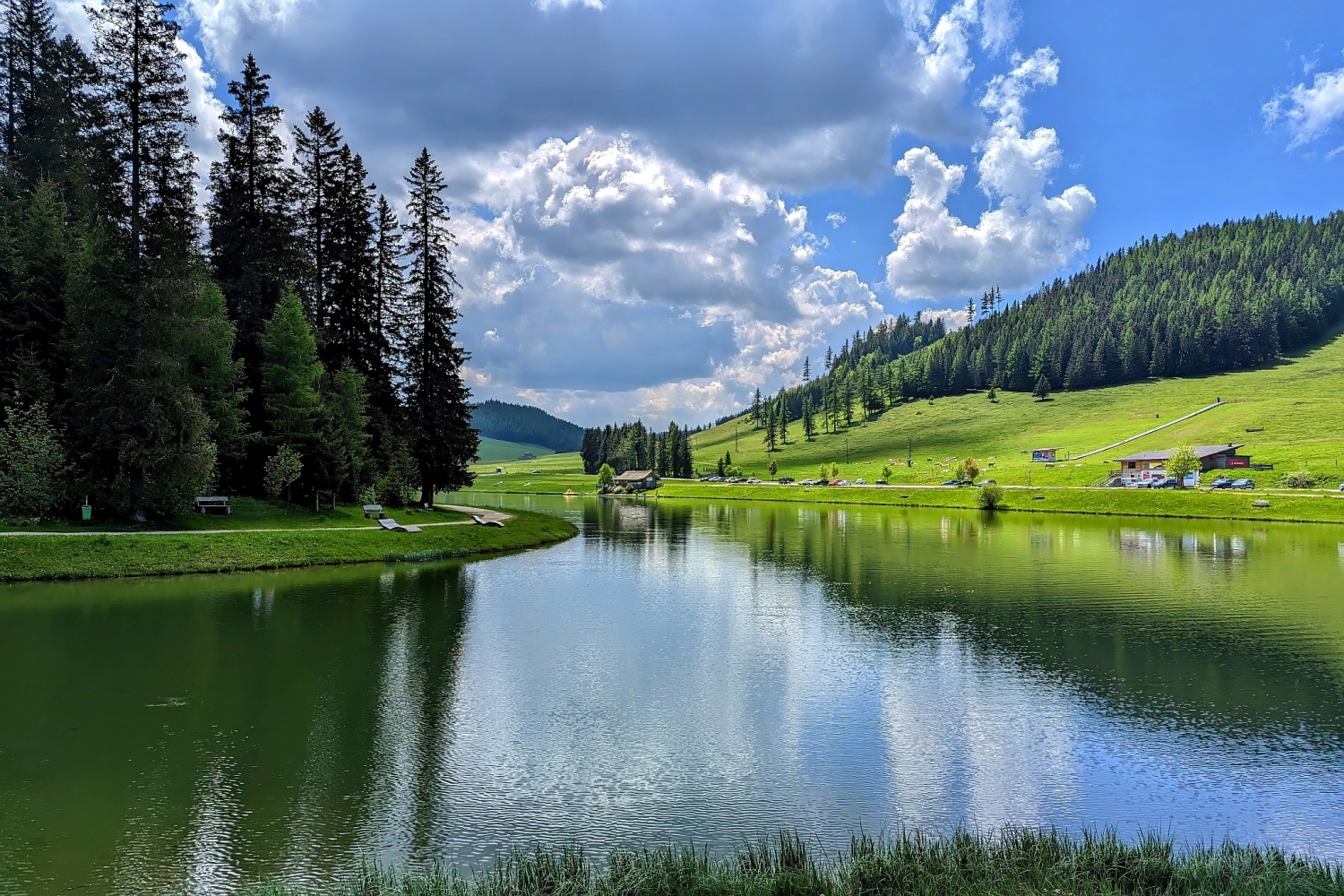
At least for me, that's close to the optimum.
_________________
Thomas Bernardy
Manual focus lenses mainly from Minolta, Pentax, Voigtlaender, Leitz, Topcon and from Russia (too many to be listed here). |
|
| Back to top |
|
 |
visualopsins


Joined: 05 Mar 2009
Posts: 10543
Location: California
Expire: 2025-04-11
|
 Posted: Tue Jun 06, 2023 2:17 am Post subject: Posted: Tue Jun 06, 2023 2:17 am Post subject: |
 |
|
visualopsins wrote:
  Those examples look really good -- more than acceptable. Those examples look really good -- more than acceptable.
I rrecently upgraded to Samsung Galaxy S22 plus with 3 rear cameras, ultra wide 12mp 120˚ fov f/2.2, wide 50mp 85˚ fov f/1.8, and 10mp telephoto 36˚ fov f/2.4. I'm still learning bells, levers, and whistles...
_________________
☮☮☮☮☮☮☮☮☮☮☮☮☮☮☮☮☮☮☮☮☮☮☮☮☮☮☮☮☮☮☮☮ like attracts like! ☮☮☮☮☮☮☮☮☮☮☮☮☮☮☮☮☮☮☮☮☮☮☮☮☮☮☮☮☮☮☮☮
Cameras: Sony ILCE-7RM2, Spotmatics II, F, and ESII, Nikon P4
Lenses:
M42 Asahi Optical Co., Takumar 1:4 f=35mm, 1:2 f=58mm (Sonnar), 1:2.4 f=58mm (Heliar), 1:2.2 f=55mm (Gaussian), 1:2.8 f=105mm (Model I), 1:2.8/105 (Model II), 1:5.6/200, Tele-Takumar 1:5.6/200, 1:6.3/300, Macro-Takumar 1:4/50, Auto-Takumar 1:2.3 f=35, 1:1.8 f=55mm, 1:2.2 f=55mm, Super-TAKUMAR 1:3.5/28 (fat), 1:2/35 (Fat), 1:1.4/50 (8-element), Super-Multi-Coated Fisheye-TAKUMAR 1:4/17, Super-Multi-Coated TAKUMAR 1:4.5/20, 1:3.5/24, 1:3.5/28, 1:2/35, 1:3.5/35, 1:1.8/85, 1:1.9/85 1:2.8/105, 1:3.5/135, 1:2.5/135 (II), 1:4/150, 1:4/200, 1:4/300, 1:4.5/500, Super-Multi-Coated Macro-TAKUMAR 1:4/50, 1:4/100, Super-Multi-Coated Bellows-TAKUMAR 1:4/100, SMC TAKUMAR 1:1.4/50, 1:1.8/55
M42 Carl Zeiss Jena Flektogon 2.4/35
Contax Carl Zeiss Vario-Sonnar T* 28-70mm F3.5-4.5
Pentax K-mount SMC PENTAX ZOOM 1:3.5 35~105mm, SMC PENTAX ZOOM 1:4 45~125mm
Nikon Micro-NIKKOR-P-C Auto 1:3.5 f=55mm, NIKKOR-P Auto 105mm f/2.5 Pre-AI (Sonnar), Micro-NIKKOR 105mm 1:4 AI, NIKKOR AI-S 35-135mm f/3,5-4,5
Tamron SP 17mm f/3.5 (51B), Tamron SP 17mm f/3.5 (51BB), SP 500mm f/8 (55BB), SP 70-210mm f/3.5 (19AH)
Vivitar 100mm 1:2.8 MC 1:1 Macro Telephoto (Kiron)
|
|
| Back to top |
|
 |
kds315*


Joined: 12 Mar 2008
Posts: 16544
Location: Weinheim, Germany
Expire: 2021-03-09
|
 Posted: Tue Jun 06, 2023 6:21 am Post subject: Posted: Tue Jun 06, 2023 6:21 am Post subject: |
 |
|
kds315* wrote:
I only use my iphone13 PRO MAX for travel photography, really good enough for what it is for and small and light and always "handy". Those have reached a quality level that it makes int IMHO unnecessary to toad heavy equipment around 
_________________
Klaus - Admin
"S'il vient a point, me souviendra" [Thomas Bohier (1460-1523)]
http://www.macrolenses.de for macro and special lens info
http://www.pbase.com/kds315/uv_photos for UV Images and lens/filter info
https://www.flickr.com/photos/kds315/albums my albums using various lenses
http://photographyoftheinvisibleworld.blogspot.com/ my UV BLOG
http://www.travelmeetsfood.com/blog Food + Travel BLOG
https://galeriafotografia.com Architecture + Drone photography
Currently most FAV lens(es):
X80QF f3.2/80mm
Hypergon f11/26mm
ELCAN UV f5.6/52mm
Zeiss UV-Planar f4/60mm
Zeiss UV-Planar f2/62mm
Lomo Уфар-12 f2.5/41mm
Lomo Зуфар-2 f4.0/350mm
Lomo ZIKAR-1A f1.2/100mm
Nikon UV Nikkor f4.5/105mm
Zeiss UV-Sonnar f4.3/105mm
CERCO UV-VIS-NIR f1.8/45mm
CERCO UV-VIS-NIR f4.1/94mm
CERCO UV-VIS-NIR f2.8/100mm
Steinheil Quarzobjektiv f1.8/50mm
Pentax Quartz Takumar f3.5/85mm
Carl Zeiss Jena UV-Objektiv f4/60mm
NYE OPTICAL Lyman-Alpha II f1.1/90mm
NYE OPTICAL Lyman-Alpha I f2.8/200mm
COASTAL OPTICS f4/60mm UV-VIS-IR Apo
COASTAL OPTICS f4.5/105mm UV-Micro-Apo
Pentax Ultra-Achromatic Takumar f4.5/85mm
Pentax Ultra-Achromatic Takumar f5.6/300mm
Rodenstock UV-Rodagon f5.6/60mm + 105mm + 150mm
|
|
| Back to top |
|
 |
kds315*


Joined: 12 Mar 2008
Posts: 16544
Location: Weinheim, Germany
Expire: 2021-03-09
|
 Posted: Tue Jun 06, 2023 6:27 am Post subject: Posted: Tue Jun 06, 2023 6:27 am Post subject: |
 |
|
kds315* wrote:
| visualopsins wrote: |
  Those examples look really good -- more than acceptable. Those examples look really good -- more than acceptable.
I rrecently upgraded to Samsung Galaxy S22 plus with 3 rear cameras, ultra wide 12mp 120˚ fov f/2.2, wide 50mp 85˚ fov f/1.8, and 10mp telephoto 36˚ fov f/2.4. I'm still learning bells, levers, and whistles... |
Why does resolution change when focal length does - seems like they are using only parts of the sensor resoltion as electronic zoom?
_________________
Klaus - Admin
"S'il vient a point, me souviendra" [Thomas Bohier (1460-1523)]
http://www.macrolenses.de for macro and special lens info
http://www.pbase.com/kds315/uv_photos for UV Images and lens/filter info
https://www.flickr.com/photos/kds315/albums my albums using various lenses
http://photographyoftheinvisibleworld.blogspot.com/ my UV BLOG
http://www.travelmeetsfood.com/blog Food + Travel BLOG
https://galeriafotografia.com Architecture + Drone photography
Currently most FAV lens(es):
X80QF f3.2/80mm
Hypergon f11/26mm
ELCAN UV f5.6/52mm
Zeiss UV-Planar f4/60mm
Zeiss UV-Planar f2/62mm
Lomo Уфар-12 f2.5/41mm
Lomo Зуфар-2 f4.0/350mm
Lomo ZIKAR-1A f1.2/100mm
Nikon UV Nikkor f4.5/105mm
Zeiss UV-Sonnar f4.3/105mm
CERCO UV-VIS-NIR f1.8/45mm
CERCO UV-VIS-NIR f4.1/94mm
CERCO UV-VIS-NIR f2.8/100mm
Steinheil Quarzobjektiv f1.8/50mm
Pentax Quartz Takumar f3.5/85mm
Carl Zeiss Jena UV-Objektiv f4/60mm
NYE OPTICAL Lyman-Alpha II f1.1/90mm
NYE OPTICAL Lyman-Alpha I f2.8/200mm
COASTAL OPTICS f4/60mm UV-VIS-IR Apo
COASTAL OPTICS f4.5/105mm UV-Micro-Apo
Pentax Ultra-Achromatic Takumar f4.5/85mm
Pentax Ultra-Achromatic Takumar f5.6/300mm
Rodenstock UV-Rodagon f5.6/60mm + 105mm + 150mm
|
|
| Back to top |
|
 |
tb_a


Joined: 26 Jan 2010
Posts: 3678
Location: Austria
Expire: 2019-08-28
|
 Posted: Tue Jun 06, 2023 7:54 am Post subject: Posted: Tue Jun 06, 2023 7:54 am Post subject: |
 |
|
tb_a wrote:
| kds315* wrote: |
| visualopsins wrote: |
  Those examples look really good -- more than acceptable. Those examples look really good -- more than acceptable.
I rrecently upgraded to Samsung Galaxy S22 plus with 3 rear cameras, ultra wide 12mp 120˚ fov f/2.2, wide 50mp 85˚ fov f/1.8, and 10mp telephoto 36˚ fov f/2.4. I'm still learning bells, levers, and whistles... |
Why does resolution change when focal length does - seems like they are using only parts of the sensor resoltion as electronic zoom? |
In fact these 48 or 50 MP sensors are using pixel pinning which result finally in max. 12 MP pictures and some of the sensor/camera units only use the native resolution of a 10 or 12 MP sensor.
Normally, these high resolution sensors in combination with pixel pinning deliver better results. That's why I went for the Pixel 7 Pro which uses a 48MP sensor for the tele lens as well.
_________________
Thomas Bernardy
Manual focus lenses mainly from Minolta, Pentax, Voigtlaender, Leitz, Topcon and from Russia (too many to be listed here). |
|
| Back to top |
|
 |
visualopsins


Joined: 05 Mar 2009
Posts: 10543
Location: California
Expire: 2025-04-11
|
 Posted: Tue Jun 06, 2023 8:37 am Post subject: Posted: Tue Jun 06, 2023 8:37 am Post subject: |
 |
|
visualopsins wrote:
| kds315* wrote: |
| visualopsins wrote: |
  Those examples look really good -- more than acceptable. Those examples look really good -- more than acceptable.
I rrecently upgraded to Samsung Galaxy S22 plus with 3 rear cameras, ultra wide 12mp 120˚ fov f/2.2, wide 50mp 85˚ fov f/1.8, and 10mp telephoto 36˚ fov f/2.4. I'm still learning bells, levers, and whistles... |
Why does resolution change when focal length does - seems like they are using only parts of the sensor resoltion as electronic zoom? |
3 separate cameras, each has own sensor...

_________________
☮☮☮☮☮☮☮☮☮☮☮☮☮☮☮☮☮☮☮☮☮☮☮☮☮☮☮☮☮☮☮☮ like attracts like! ☮☮☮☮☮☮☮☮☮☮☮☮☮☮☮☮☮☮☮☮☮☮☮☮☮☮☮☮☮☮☮☮
Cameras: Sony ILCE-7RM2, Spotmatics II, F, and ESII, Nikon P4
Lenses:
M42 Asahi Optical Co., Takumar 1:4 f=35mm, 1:2 f=58mm (Sonnar), 1:2.4 f=58mm (Heliar), 1:2.2 f=55mm (Gaussian), 1:2.8 f=105mm (Model I), 1:2.8/105 (Model II), 1:5.6/200, Tele-Takumar 1:5.6/200, 1:6.3/300, Macro-Takumar 1:4/50, Auto-Takumar 1:2.3 f=35, 1:1.8 f=55mm, 1:2.2 f=55mm, Super-TAKUMAR 1:3.5/28 (fat), 1:2/35 (Fat), 1:1.4/50 (8-element), Super-Multi-Coated Fisheye-TAKUMAR 1:4/17, Super-Multi-Coated TAKUMAR 1:4.5/20, 1:3.5/24, 1:3.5/28, 1:2/35, 1:3.5/35, 1:1.8/85, 1:1.9/85 1:2.8/105, 1:3.5/135, 1:2.5/135 (II), 1:4/150, 1:4/200, 1:4/300, 1:4.5/500, Super-Multi-Coated Macro-TAKUMAR 1:4/50, 1:4/100, Super-Multi-Coated Bellows-TAKUMAR 1:4/100, SMC TAKUMAR 1:1.4/50, 1:1.8/55
M42 Carl Zeiss Jena Flektogon 2.4/35
Contax Carl Zeiss Vario-Sonnar T* 28-70mm F3.5-4.5
Pentax K-mount SMC PENTAX ZOOM 1:3.5 35~105mm, SMC PENTAX ZOOM 1:4 45~125mm
Nikon Micro-NIKKOR-P-C Auto 1:3.5 f=55mm, NIKKOR-P Auto 105mm f/2.5 Pre-AI (Sonnar), Micro-NIKKOR 105mm 1:4 AI, NIKKOR AI-S 35-135mm f/3,5-4,5
Tamron SP 17mm f/3.5 (51B), Tamron SP 17mm f/3.5 (51BB), SP 500mm f/8 (55BB), SP 70-210mm f/3.5 (19AH)
Vivitar 100mm 1:2.8 MC 1:1 Macro Telephoto (Kiron)
|
|
| Back to top |
|
 |
tb_a


Joined: 26 Jan 2010
Posts: 3678
Location: Austria
Expire: 2019-08-28
|
 Posted: Tue Jun 06, 2023 9:39 am Post subject: Posted: Tue Jun 06, 2023 9:39 am Post subject: |
 |
|
tb_a wrote:
Just to illustrate, the advantage of having a high-resolution sensor on the telephoto lens as well. Again, all clickable for best quality viewing.
Native tele lens focal length, apprx. 120 mm FOV equivalence with 48 MP sensor, resulting in a 12 MP picture (downsized for presentation):
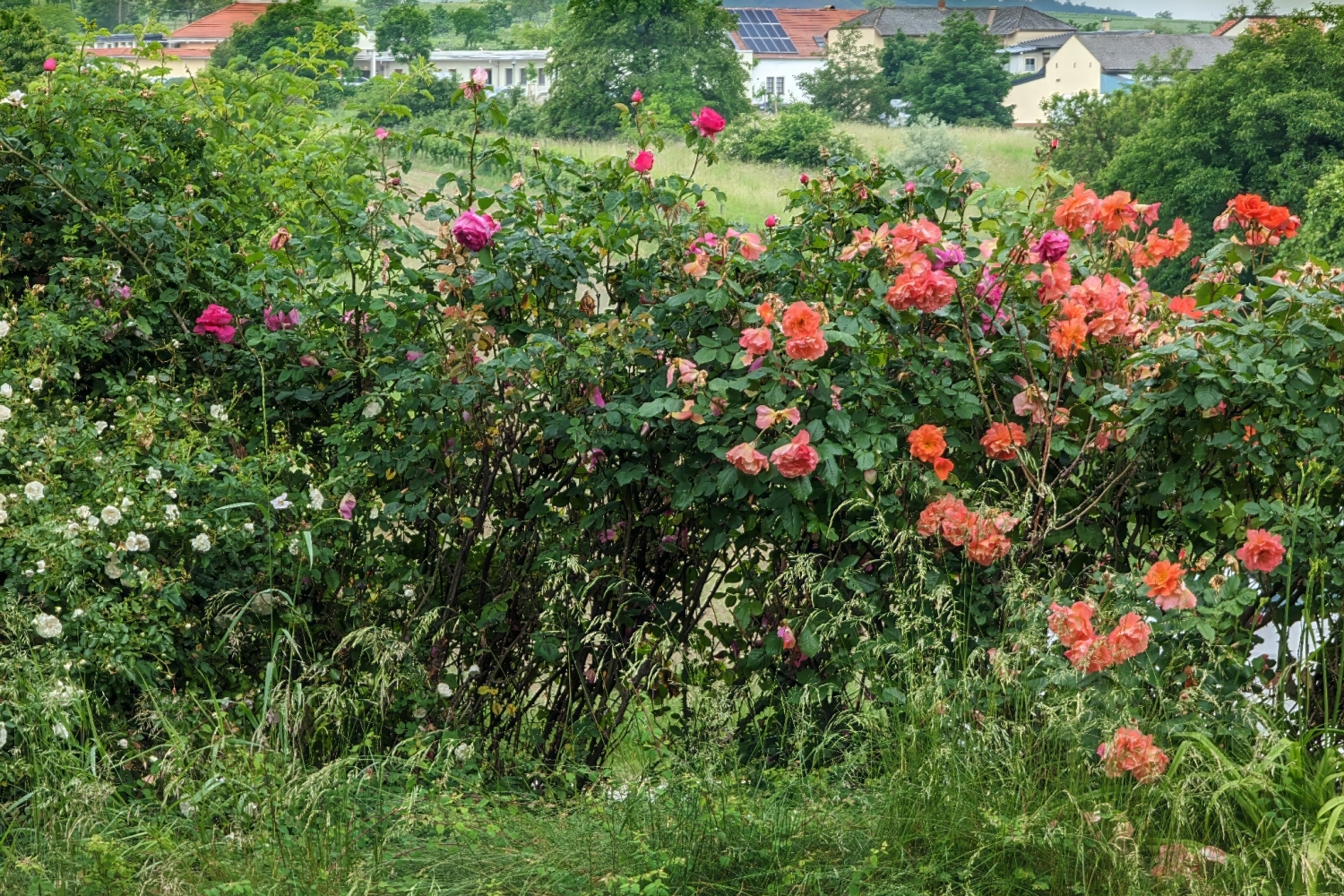
Digital 2x zoom, apprx. 240 mm FOV equivalence, resulting in a 12 MP picture as well:

"Normal" smartphone lens from same distance for comparison (apprx. 24 mm FOV equivalence):

_________________
Thomas Bernardy
Manual focus lenses mainly from Minolta, Pentax, Voigtlaender, Leitz, Topcon and from Russia (too many to be listed here). |
|
| Back to top |
|
 |
|
|
